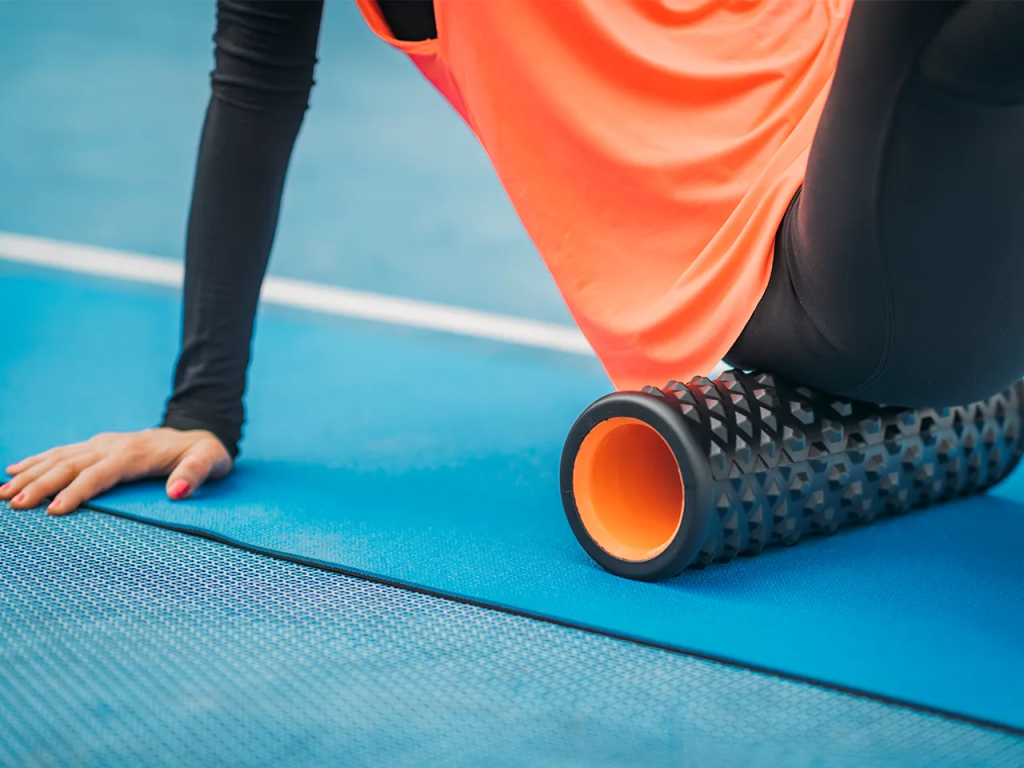
Foam rolling has become increasingly popular in recent years as a way to improve flexibility, alleviate muscle pain, and improve overall athletic performance. One of the key benefits of foam rolling is its ability to aid in post-workout recovery. In this article, we will discuss how foam rolling can help with post-workout recovery and provide tips for incorporating foam rolling into your recovery routine.
What is Post-Workout Recovery?
Post-workout recovery refers to the period of time after a workout when your body is repairing and rebuilding muscle tissue. During a workout, your muscles undergo stress and damage. Post-workout recovery is essential to allow your muscles to repair and rebuild, which leads to improved athletic performance and reduced risk of injury.
Post-workout recovery involves several key factors, including rest, hydration, nutrition, and stretching. Foam rolling is another valuable tool that can aid in post-workout recovery.
How Foam Rolling Can Help with Post-Workout Recovery
Increased Blood Flow
Foam rolling can help to increase blood flow to the muscles, which can aid in the delivery of nutrients and oxygen to the muscles. This increased blood flow can help to reduce inflammation and promote healing, which is essential for post-workout recovery.
Improved Range of Motion
Foam rolling can also help to improve your range of motion. After a workout, your muscles can become tight and stiff, which can limit your range of motion. By using a foam roller to massage and stretch your muscles, you can improve your flexibility and range of motion, which is important for preventing injury and improving athletic performance.
Reduced Muscle Soreness
Foam rolling can also help to reduce muscle soreness after a workout. Delayed onset muscle soreness (DOMS) is a common condition that occurs after a workout and can cause stiffness, soreness, and pain in the muscles. Foam rolling can help to alleviate this soreness by increasing blood flow to the muscles and reducing inflammation.
Increased Relaxation
Foam rolling can also help to promote relaxation, which is essential for post-workout recovery. After a workout, your body can be in a state of stress, with increased levels of cortisol and other stress hormones. Foam rolling can help to promote relaxation and reduce stress, which is important for allowing your body to recover and rebuild.
Tips for Incorporating Foam Rolling into Your Post-Workout Recovery Routine
Timing
Foam rolling can be done at any time, but it is particularly beneficial after a workout. After a workout, your muscles are warm and pliable, which makes them more receptive to foam rolling. Plan to spend 10-15 minutes foam rolling after a workout to aid in your post-workout recovery.
Targeted Areas
Focus on targeted areas that feel tight or sore after a workout. Common areas to foam roll include your calves, quads, hamstrings, IT band, and back. Spend several minutes on each muscle group, rolling slowly back and forth and focusing on areas of tension.
Pressure
Start with a softer foam roller and gradually work your way up to a more intense one. Apply pressure to the muscles with the foam roller, using your body weight to increase the pressure as needed. Roll slowly back and forth, focusing on areas of tension.
Frequency
Incorporate foam rolling into your post-workout recovery routine on a regular basis. Foam rolling can be done daily, or as needed to aid in your post-workout recovery. Experiment with different foam rollers and techniques to find the routine that works best for you.
Hydration
Foam rolling can be dehydrating, so be sure to drink plenty of water before and after your foam rolling sessions. Staying hydrated is essential for post-workout recovery and can help to reduce muscle soreness.
Stretching
Follow up your foam rolling routine with stretching to help improve flexibility and range of motion. Incorporate both static and dynamic stretches into your routine to target different muscle groups.
Conclusion
Foam rolling is a valuable tool for post-workout recovery. By increasing blood flow, improving range of motion, reducing muscle soreness, and promoting relaxation, foam rolling can aid in the recovery process and improve overall athletic performance. By incorporating foam rolling into your post-workout recovery routine, you can speed up the recovery process and reduce your risk of injury. Remember to focus on targeted areas, apply appropriate pressure, stay hydrated, and follow up with stretching to get the most out of your post-workout foam rolling routine.

